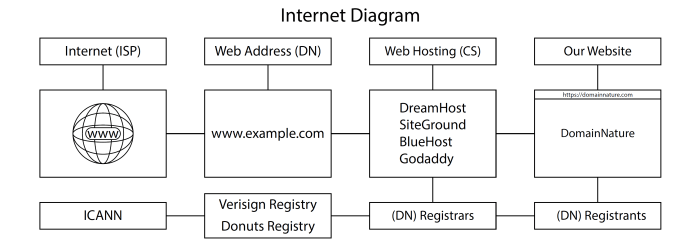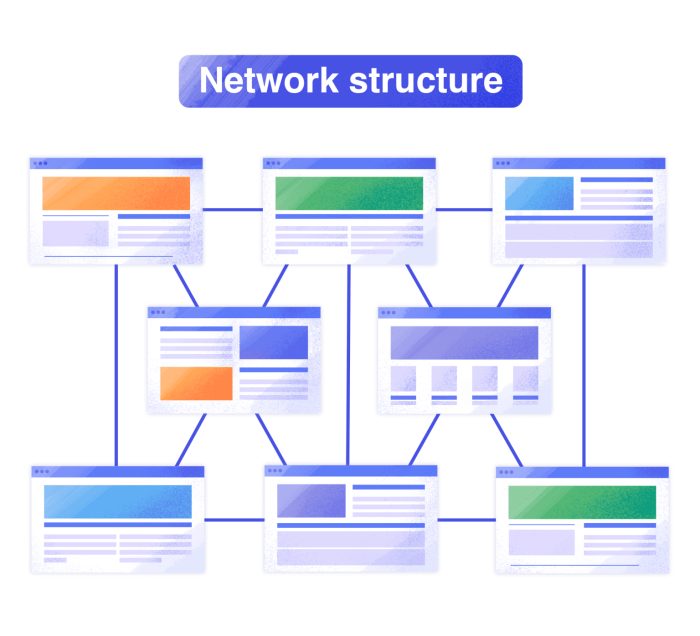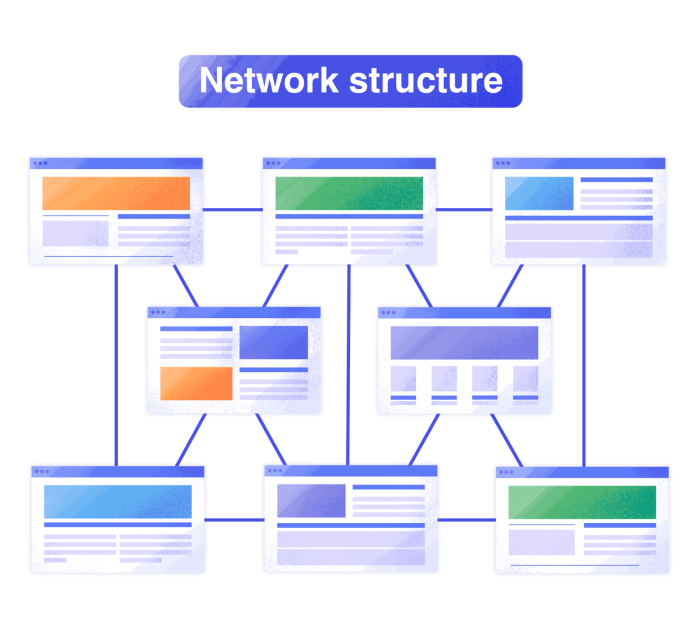What is website schema? It’s the secret sauce behind how search engines understand your website’s content. Imagine giving search engines detailed descriptions of your web pages, telling them exactly what each piece of information is. That’s schema markup. By adding schema, you’re essentially giving search engines a roadmap, allowing them to better display your content in search results, leading to more clicks and increased visibility.
This comprehensive guide will explore everything from the basics of schema markup to its implementation and the specific benefits for various content types, ultimately helping you optimize your site for better search engine visibility.
Website schema goes beyond simply describing your website. It’s about providing context and structure to the information, allowing search engines to understand the nuances of your content. This clarity leads to richer search results, including rich snippets that highlight key information directly in the search results page. By understanding how schema markup works, you’ll be empowered to optimize your website for improved search engine rankings and increased organic traffic.
Introduction to Website Schema: What Is Website Schema
Website schema markup is a standardized vocabulary that helps search engines understand the content of a webpage. Think of it as a detailed instruction manual for search engines, enabling them to interpret the meaning behind your website’s information. By using schema markup, you provide context to your content, allowing search engines to present your website’s information in a more meaningful and user-friendly way in search results.This detailed structure enhances the user experience by providing more informative snippets and rich results in search engine results pages (SERPs).
The improved understanding leads to higher click-through rates and increased visibility, contributing significantly to a website’s overall search engine optimization () performance.
Purpose and Benefits of Schema Markup
Schema markup is a crucial tool for optimizing website visibility in search results. It helps search engines understand the context and meaning of your website’s content. This improved understanding leads to richer search results, which can significantly boost click-through rates and improve user experience. The result is more organic traffic, a key factor in achieving a higher search engine ranking.
Website schema is basically a standardized way to mark up your website’s content, helping search engines understand what your pages are about. This is crucial for SEO, especially if you’re in the pest control business. Knowing when to start your pest control marketing efforts, for example, pest control marketing when to start , can greatly impact how effectively your site is found.
Ultimately, a well-structured schema can significantly improve your website’s visibility and attract more potential customers.
Different Types of Schema Markup
Numerous schema types are available, each catering to a specific type of content. This variety allows you to provide a comprehensive understanding of the webpage’s information. This structured approach is critical for search engines to present the data correctly in search results.
- Product schema: This type of markup is used to describe products, enabling search engines to display detailed product information directly in search results, including price, availability, and customer reviews. This helps users find exactly what they’re looking for quickly.
- Article schema: Designed for blog posts, news articles, and other similar content, this markup provides crucial details like author, publication date, and content tags, enabling search engines to present the article in a visually appealing way, potentially increasing engagement and click-through rates.
- Event schema: This schema is perfect for detailing events, including conferences, workshops, concerts, or other happenings. It helps search engines to present this information in a user-friendly format with dates, times, locations, and other essential details.
- Other types: Beyond these examples, various other schema types exist to cater to different content types, including recipes, movies, books, and more. Each schema type is tailored to provide specific information for particular webpages, thereby enhancing user experience and .
How Schema Markup Improves
Schema markup improves search engine optimization by providing context and meaning to your website’s content. This structured approach enables search engines to present your website’s information in a more user-friendly and informative way. The enhanced user experience, through rich results and informative snippets, often results in higher click-through rates, boosting your search engine ranking.
Examples of Schema Markup Types
Let’s explore specific examples of schema markup in action.
- Product Schema: Imagine an online store selling shoes. By using product schema, the store can include detailed information about each shoe in search results, such as price, availability, customer ratings, and product descriptions, making it easier for potential customers to make informed decisions.
- Article Schema: A blog post about the latest advancements in AI could use article schema to include the author, publication date, and content tags. This structured information helps search engines present the blog post in a user-friendly way in search results, which could boost click-through rates.
- Event Schema: A company organizing a conference can use event schema to provide details such as date, time, location, and event description. This detailed information will be displayed in search results, increasing visibility and user engagement.
Comparison of Schema Types
| Schema Type | Description | Benefits |
|---|---|---|
| Product | Describes products with details like price, availability, and reviews. | Displays rich product information in search results, increasing click-through rates and conversions. |
| Article | Marks up blog posts, news articles, and similar content with author, publication date, and content tags. | Improves search engine understanding of article content, leading to better search result presentation and higher visibility. |
| Event | Details events with date, time, location, and description. | Provides rich event information in search results, helping users find relevant events quickly and easily. |
Implementing Schema Markup

Schema markup is crucial for enhancing search engine understanding of your website’s content. By providing structured data, you help search engines interpret information like product details, business locations, and events more effectively. This ultimately improves your website’s visibility and click-through rates in search results.Implementing schema markup involves adding structured data to your website’s HTML. This structured data, often in the form of microdata, helps search engines understand the context and meaning of your content.
The result is improved search engine rankings, rich snippets in search results, and a more effective way for users to find what they need.
Methods for Implementing Schema Markup
Several methods exist for implementing schema markup. The most common and generally recommended method is using microdata. Other options include JSON-LD and RDFa. Microdata involves embedding schema.org vocabulary directly within your HTML, while JSON-LD employs a JavaScript Object Notation format for structured data, often placed in a script tag. RDFa, or Resource Description Framework in Attributes, utilizes attributes within HTML tags.
Choosing the right method depends on your website’s structure and complexity.
Using schema.org Vocabulary
The schema.org vocabulary is a standardized set of terms for describing different types of content. This standardized vocabulary allows search engines to consistently interpret your website’s data, leading to improved search engine understanding. It’s essential to choose the appropriate schema.org types for your specific content, such as Product, Article, or Event, ensuring accurate and consistent descriptions. This structured approach helps avoid ambiguity and ensures your data is readily understood by search engines.
Adding Schema Markup to HTML Pages
Schema markup is implemented by adding specific attributes to your HTML elements. For instance, to mark up a product, you would add attributes to the `
Testing Schema Markup for Correctness
Validating your schema markup is essential to ensure its correct interpretation by search engines. Various tools are available for this purpose, including the Google Structured Data Testing Tool. This tool helps identify any errors or inconsistencies in your markup, providing valuable insights into how search engines might perceive your data. Thorough testing ensures that your markup is optimized for accurate indexing and display in search results.
Schema Markup Implementation Across Platforms
| Platform | Implementation Steps |
|---|---|
| WordPress | Utilize a plugin like Schema Pro or Schema.org structured data plugin. Configure the plugin to add the markup to specific content types like posts, products, or pages. |
| Wix | Use Wix’s built-in tools or a third-party plugin. Modify the HTML code of your website to embed the schema markup using microdata, JSON-LD, or RDFa. |
| Custom Website | Manually embed schema markup directly into the HTML code of your website. Ensure proper implementation of the schema.org vocabulary and attributes. |
Step-by-Step Procedure for Adding Schema Markup
- Identify the type of content you want to mark up (e.g., a product, a blog post).
- Determine the appropriate schema.org type for that content (e.g., Product, Article).
- Locate the relevant HTML element(s) containing the content you want to mark up.
- Add schema markup attributes to the HTML element(s). This involves specifying the schema.org type and relevant properties.
- Validate your markup using a tool like the Google Structured Data Testing Tool.
- Review and refine the markup as needed.
Schema Markup for Specific Content Types
Schema markup isn’t just about general website optimization; it’s a powerful tool for enhancing search results for specific content types. By providing structured data about your content, you help search engines understand it better, leading to more relevant and informative search results for users. This detailed look at schema markup for various content types demonstrates how to leverage this technique for improved visibility and engagement.Schema markup allows search engines to understand the context and meaning of your content beyond just s.
This refined understanding leads to more accurate search results, potentially increasing click-through rates and driving more organic traffic to your site. For example, a product page with schema markup describing its features and specifications is more likely to appear prominently in product searches, attracting users actively looking for that particular item.
Schema Markup for Products
Schema markup for products allows search engines to easily extract crucial information like price, availability, and features. This structured data improves search results by displaying rich snippets, including images and detailed product information directly in search engine results pages (SERPs). For example, a product with schema markup might display its price, reviews, and images in the search results, encouraging clicks.
This clear display of product details directly within search results improves the user experience and potentially increases conversion rates.
Schema Markup for Articles
Schema markup for articles helps search engines understand the structure and content of articles, including author information, publication date, and topics covered. This enhanced understanding results in more accurate and relevant search results. Articles with schema markup often display structured information within search results, such as the article’s title, author, and publication date, making them more enticing to users.
Schema Markup for Events
Schema markup for events provides crucial information like date, time, location, and ticket prices, which are vital for users searching for events. This structured data helps search engines display rich snippets, including the event’s date, time, location, and description in search results, which significantly increases visibility for events. Providing clear event details directly in search results can attract a larger audience.
Schema Markup for Local Businesses
Schema markup for local businesses is essential for visibility in local searches. It provides details like address, phone number, operating hours, and services offered. This structured data ensures that your business appears in local search results, making it easier for customers to find you. A local business with comprehensive schema markup is more likely to appear in local pack results and map listings, making it easier for potential customers to find and contact the business.
Schema Markup for People
Schema markup for people, such as authors or public figures, helps search engines understand their roles and affiliations. This allows search engines to display relevant information, such as their profession, biography, and affiliations, in search results, making it easier for users to find detailed information about individuals. This clear presentation of information in search results can improve user engagement and potentially lead to more interactions.
Schema Markup for Reviews and Ratings
Schema markup for reviews and ratings helps search engines understand user feedback and opinions about products, services, or businesses. This structured data is displayed in rich snippets, such as star ratings and reviews, directly in search results. This provides potential customers with quick access to user feedback and can significantly influence purchasing decisions.
Schema Markup for Recipes
Schema markup for recipes allows search engines to understand the ingredients, instructions, and nutritional information of a recipe. This structured data is displayed in rich snippets, such as ingredient lists and preparation time, in search results, increasing user engagement. This feature is useful for users looking for quick and easy recipe ideas.
Schema Markup for News Articles
Schema markup for news articles helps search engines understand the publication date, author, and other important information about the article. This structured data is displayed in rich snippets, such as publication date and author, in search results, which improves user engagement. This structured approach enhances user experience by making it easier to locate relevant news information.
Schema Markup and Search Engine Visibility

Schema markup isn’t just a technical detail; it’s a crucial tool for websites aiming to improve their search engine visibility. By providing structured data, schema markup helps search engines understand the content on your pages, leading to more accurate indexing and potentially more prominent display in search results. This, in turn, can translate to increased click-through rates and ultimately, more traffic to your site.Search engines, like Google, use algorithms to interpret the content on websites.
Schema markup acts as a detailed roadmap, guiding search engines to the specific information within the content. This clarity helps search engines accurately categorize and understand the context of the information, improving the overall quality of search results.
How Search Engines Use Schema Markup
Search engines leverage schema markup to grasp the meaning and context of website content beyond simple s. It’s akin to providing a detailed description of your website’s content to the search engine. This allows search engines to present more comprehensive and informative search results to users. For example, if a page details a product, schema markup helps the search engine understand that this is a product page and not, say, a blog post about the product.
Schema Markup and Rich Snippets
Schema markup plays a significant role in rich snippets, which are enhanced search results. These snippets provide additional information directly within the search engine results page (SERP), such as star ratings, prices, availability, and publication dates. By adding schema markup to your website, you provide search engines with the necessary data to display these rich snippets, often leading to a more visually appealing and informative result.
This enhanced visibility can significantly increase click-through rates.
Website schema is basically a standardized way to mark up your website content, making it easier for search engines to understand. This structured data helps search engines display richer results, boosting your site’s visibility. Think of it as giving search engines extra context about your content. Tools like AI administrative tools for education ai administrative tools for education can streamline administrative tasks, freeing up educators to focus on what matters most – teaching and learning.
By using schema, you can enhance the way search engines understand your website’s content, improving your SEO and user experience.
Impact on Click-Through Rates and Website Traffic
The improved visibility and enhanced search results stemming from schema markup directly affect click-through rates (CTR). Users are more likely to click on results that provide a clear preview of the content, particularly when it comes to products, reviews, or events. This increased CTR directly translates to more website traffic. Studies have consistently shown a correlation between the use of schema markup and a rise in organic traffic.
Effective Schema Markup Examples, What is website schema
Several websites effectively utilize schema markup for enhanced search engine visibility. E-commerce sites frequently use schema markup for products, including details like price, availability, and reviews. News websites leverage schema markup to highlight article publication dates, authors, and categories. By providing this structured data, these websites enhance the search experience for users, leading to increased traffic and brand visibility.
Website schema helps search engines understand your website’s content better, which can boost your SEO. Optimizing your WooCommerce store for speed, like by following the steps in how to speed up woocommerce performance , is crucial. Faster load times lead to happier customers and a better search engine ranking, and schema markup will help search engines find your site and understand your products.
This all ties back into better SEO results for your website.
Comparison of Schema Markup Impact
| Feature | Positive Impact | Negative Impact ||—|—|—|| Increased CTR | More users click on results with rich snippets | No direct negative impact, but if not implemented correctly, could lead to errors in display || Improved Search Rankings | Enhanced visibility in search results | No direct negative impact, but if implementation is incorrect, it might not improve rankings or lead to errors || Enhanced User Experience | Rich snippets provide more information, making results more attractive and helpful to users | No direct negative impact, but if incorrectly implemented, could result in negative user experience |
<script type="application/ld+json"> "@context": "https://schema.org", "@type": "Product", "name": "Example Product", "description": "A great product for everyone!", "image": "image.jpg", "price": "99.99", "availability": "InStock" </script>
This example demonstrates how schema markup is used to provide details about a product to search engines. The structured data includes the product name, description, image, price, and availability.
Schema Markup Tools and Resources
Schema markup is a powerful tool for enhancing search engine understanding of your website’s content. By using structured data, you provide search engines with more context about your pages, leading to improved visibility and potentially higher rankings in search results. This section explores the tools and resources available to make the most of schema markup implementation.
Effective schema markup implementation hinges on validation and adherence to best practices. The right tools and resources can significantly simplify the process and ensure that your markup is both accurate and optimized for search engines.
Schema Markup Validation Tools
Understanding schema markup validation tools is crucial for ensuring your implementation is correct and efficient. Validating your schema markup helps you identify and fix potential errors before they affect your search engine visibility. Correct validation prevents misunderstandings by search engines, which can lead to improper indexing or display of your website’s content.
Online Schema Markup Validators and Testing Tools
Several online tools simplify the validation process. These tools allow you to input your schema markup and receive feedback on its correctness. These tools are invaluable resources in the schema markup process. Here are some prominent online validators:
- Google’s Structured Data Testing Tool: This is a highly recommended and widely used tool, offering detailed feedback on the correctness and structure of your schema markup. It’s a user-friendly interface that provides clear explanations of any errors, enabling quick and effective corrections.
- Schema.org Validator: This tool offers a straightforward approach to validating schema markup. It provides quick feedback on the structure and accuracy of your schema markup, allowing for efficient debugging and enhancement.
- Microdata Validator: This validator is specifically designed for microdata markup. It helps you identify errors in your microdata implementation and ensures that your markup adheres to the standards, contributing to correct search engine interpretation of your content.
Using Google’s Structured Data Testing Tool
Google’s Structured Data Testing Tool is a powerful resource for schema markup validation. It provides detailed feedback on the correctness and structure of your schema markup. To use the tool, simply paste your HTML code containing the schema markup into the tool’s input field. The tool will then analyze the code and provide detailed reports on any errors or issues found, helping you fix problems quickly and easily.
Tutorials and Documentation on Schema Markup
Numerous websites offer tutorials and documentation to deepen your understanding of schema markup. These resources cover various aspects of schema markup, including best practices, implementation techniques, and specific schema types. Learning from these resources ensures your implementation aligns with current best practices.
- Google’s Developers Documentation: This is an excellent source of information on schema markup best practices, with detailed examples and comprehensive documentation. The detailed tutorials and explanations make it an indispensable resource for anyone wanting to master schema markup.
- Schema.org Website: The official source for schema.org vocabulary provides detailed explanations of different schema types and their usage. This is a reliable resource for learning about the various schema types and their specific applications.
- MDN Web Docs: This website offers comprehensive documentation on web technologies, including schema markup. It provides a wealth of information on various schema markup types and their usage. This is an important resource to understand the theoretical underpinnings of schema markup.
Resources for Learning Different Schema Markup Types
Understanding the different types of schema markup is vital for targeting specific content. Learning about these types empowers you to use schema markup to effectively represent your website’s information. Each type provides a specific context for your data, allowing search engines to interpret it more accurately.
- Schema.org: This is the definitive source for schema markup vocabulary. It provides a comprehensive list of schema types and detailed descriptions of each type, enabling you to select the most suitable markup for your content.
- Online Tutorials and Articles: Numerous online tutorials and articles offer in-depth explanations of specific schema types. These resources provide practical examples and real-world applications of schema markup, assisting you in choosing and implementing the correct schema types.
Final Wrap-Up
In conclusion, understanding and implementing website schema is a crucial step in modern . It’s not just about s; it’s about providing a clear and structured representation of your content to search engines. By leveraging schema markup, you’re essentially equipping your website with a powerful tool to improve its visibility and attract more targeted visitors. This comprehensive guide has equipped you with the knowledge to confidently implement schema on your site, maximizing its potential in the competitive online landscape.






